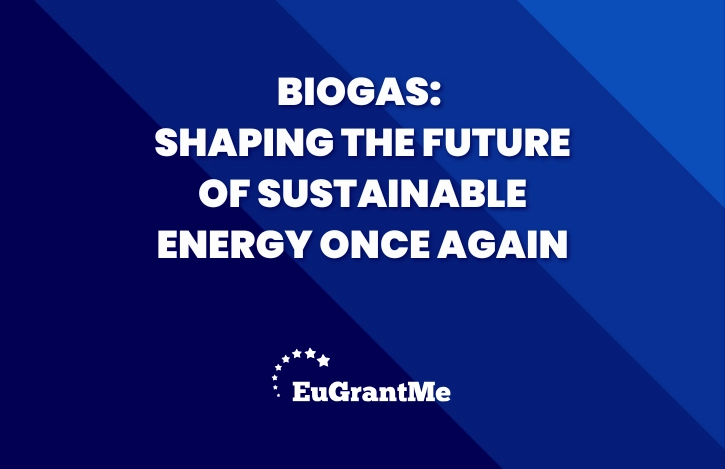Biogas sustainable energy is back in the spotlight. As countries push for net zero targets, biogas offers a clean and circular solution. This form of renewable energy transforms organic waste into power. It lowers emissions while reducing reliance on fossil fuels.
Although not a new concept, biogas is being redefined through innovation. New technologies improve its efficiency and versatility. More importantly, it connects energy goals with waste reduction and rural development. The momentum is building. Farmers, industries, and governments are rethinking energy sources. Biogas now plays a stronger role in the global green transition.
What Makes Biogas Different?
Biogas stands out because of its source. It’s produced from the breakdown of organic matter—manure, crop waste, sewage, and food scraps. Through anaerobic digestion, these materials release methane, which is captured and used for energy. This process creates a double benefit. First, it produces clean fuel. Second, it reduces landfill use and methane leaks. The remaining material, digestate, becomes a natural fertiliser.
Unlike other renewables, biogas works even when the sun doesn’t shine or the wind doesn’t blow. It offers consistent energy, which makes it valuable for grid stability and local supply.
Supporting the Circular Economy
The circular economy needs systems that recover value from waste. Biogas delivers just that. It turns organic waste into energy and fertiliser. This closes the loop between production and consumption. In agriculture, this has major potential. Farmers can use animal waste to produce power. At the same time, they return digestate to the soil. This reduces chemical inputs and cuts emissions.
In cities, food waste and sewage become fuel instead of landfill burden. Biogas plants located near waste sources offer local energy with a small carbon footprint. As climate targets become stricter, these closed-loop systems are more than useful—they’re essential.
Technological Advances Lead the Way
Technology is helping biogas sustainable energy evolve. Modern digesters are more efficient, compact, and scalable. Some are even mobile. This makes them suitable for farms, factories, and urban facilities.
Monitoring systems now track gas yields in real time. They optimise input ratios and minimise losses. Newer designs can even capture more carbon dioxide for reuse.
Upgrading systems allow biogas to meet pipeline standards. Once purified, it becomes biomethane—a direct replacement for natural gas. This opens up broader distribution and integration into national energy networks.
Advanced research continues. Scientists are exploring co-digestion, algae use, and microbiome management. The aim is clear: more energy, less waste, lower costs.
Policy Frameworks Are Catching Up
No energy shift succeeds without supportive policy. Fortunately, governments now recognise the value of biogas. Many countries offer feed-in tariffs, tax credits, or investment subsidies. These incentives reduce upfront costs and improve project viability.
National targets are also expanding. The EU, for example, aims to increase biogas production as part of its REPowerEU plan. India and Brazil support biogas through rural electrification and waste-to-energy schemes.
Yet policy gaps remain. Permitting can be slow. Cross-sector rules often conflict. Stronger governance would boost investor confidence and accelerate deployment. Public procurement also plays a role. If governments commit to buying green gas, it strengthens the market and signals long-term stability.
A Rural Opportunity
In rural areas, biogas sustainable energy creates clear benefits. Many farms already produce suitable waste. Turning it into energy reduces costs and emissions. It also makes farms more self-sufficient.
Jobs are created along the value chain—from plant operation to maintenance and distribution. Rural regions often lack access to stable electricity. Biogas can fill this gap while supporting food and energy security.
When linked with cooperatives or municipalities, biogas systems foster community resilience. They reduce import needs, empower local action, and create shared economic value. This decentralised model matches the global shift toward local energy systems. It’s scalable, inclusive, and green.
Urban Integration and Transport Use
Cities also generate huge amounts of organic waste. Biogas plants can turn that waste into clean energy for municipal use. This reduces landfill pressure and boosts renewable supply.
Public transport fleets are now using biomethane. Buses and trucks run smoothly on it, with much lower emissions than diesel. Refuelling stations are expanding, especially in Europe and Asia.
Cities aiming for carbon neutrality need diverse tools. Biogas adds flexibility to their energy mix. It also supports environmental goals, such as waste reduction and air quality improvement. Urban biogas success depends on good planning and public engagement. When done well, it transforms waste into real value.
Environmental and Climate Impact
One of the biggest strengths of biogas lies in its environmental footprint. It reduces methane emissions by capturing them at the source. Methane is a potent greenhouse gas. Preventing leaks from landfills or manure lagoons has immediate climate benefits.
Moreover, using biogas avoids fossil fuel combustion. It provides cleaner heat, power, or transport fuel. Lifecycle emissions are significantly lower than oil, coal, or natural gas. The digestate, rich in nutrients, replaces synthetic fertilisers. This reduces soil acidification and runoff pollution. It supports healthier ecosystems and long-term soil productivity.
In short, biogas doesn’t just provide energy—it supports climate action across sectors.
Social Benefits and Equity
Clean energy transitions must also be fair. Biogas contributes to this goal by enabling local ownership and inclusive participation. Small systems are affordable and easy to manage. They empower communities, especially in the Global South. Women and smallholder farmers benefit from safer cooking fuels and new income streams. Health improves when waste is properly managed and smoke exposure declines.
Education and awareness also grow. Where biogas is introduced, people learn about sustainability, energy, and circular principles. This creates a culture of stewardship. Inclusive energy systems are more durable. Biogas, when implemented thoughtfully, builds both energy access and social cohesion.
Market Trends and Future Growth
The global biogas market is expanding. Analysts predict steady growth over the next decade. Demand comes from multiple sectors: power, heating, transport, and industrial use.
Large energy firms now invest in biogas. They see it as a reliable and complementary part of the green mix. Retail chains and food producers also enter the space, often to offset emissions or manage waste more sustainably.
Carbon markets could boost biogas further. Verified credits from methane reduction or avoided fossil use provide new revenue streams. This makes biogas even more attractive to investors. Scaling up requires continued innovation. However, the market signals are strong and growing.
Risks and Challenges
Despite its strengths, biogas sustainable energy still faces challenges. Project costs remain high, especially for small developers. Finance access is uneven. Technical skills are often limited in remote areas.
Policy fragmentation also slows progress. Some jurisdictions lack clear biogas rules. Others impose complex or outdated standards. Social acceptance varies. In some places, locals oppose digesters due to odour or land use concerns. Better communication and planning can address these fears.
In addition, feedstock competition is increasing. Food waste, manure, and crops all have alternative uses. A balance is needed to ensure sustainable supply chains. With the right support, these hurdles can be overcome.
A Renewable Powerhouse Reimagined
Biogas is not new, but it is newly vital. It provides clean, reliable, and locally-sourced energy. At the same time, it tackles waste and supports rural economies. As the world races toward carbon neutrality, every sustainable option matters. Biogas sustainable energy offers an elegant and effective solution. It links energy, food, and waste systems in a circular way.
Innovation, policy, and public engagement will drive its future. But the foundation is strong. Biogas is already shaping new possibilities for farms, cities, and communities around the globe. With continued investment and bold thinking, biogas sustainable energy can rise to meet tomorrow’s clean energy needs—once again.
At EuGrantMe, we are passionate about fostering innovation and empowering ambitious minds to flourish. Our mission revolves around providing top-notch grant writing services for the EIC Accelerator and Horizon grants in Europe. We enable our customers to unlock the full potential of their ground-breaking ideas.
Do you have a project to turn into reality?
Contact us!


